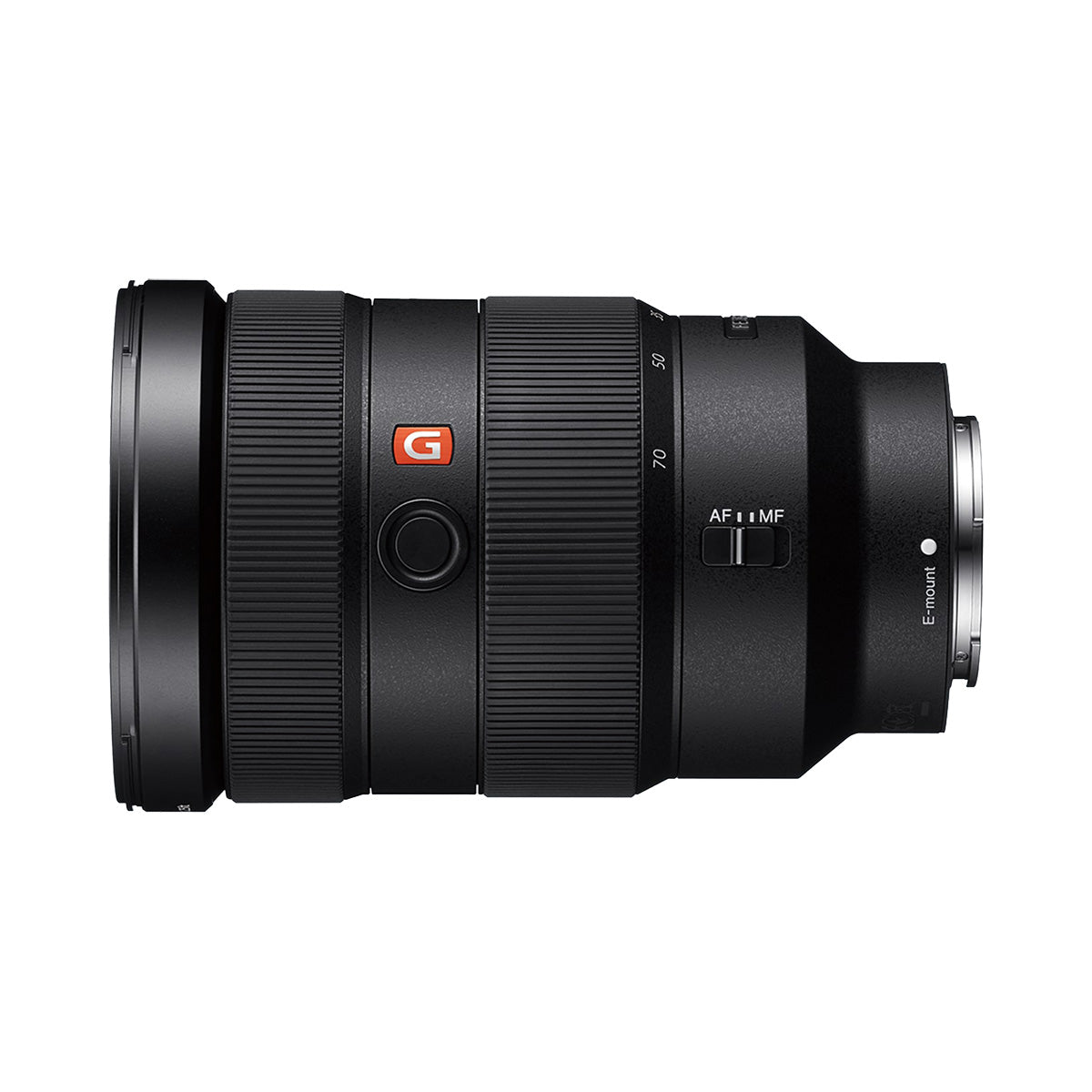Product Description
Sony FE 24-70mm f2.8 GM Lens: High-Performance Flexibility
Experience the perfect blend of versatility and performance with the Sony FE 24-70mm f2.8 GM Lens. This fast, standard zoom lens is designed for E-mount mirrorless cameras and delivers exceptional image quality throughout its wide-angle to short telephoto range. Its constant f/2.8 aperture, advanced optical design, and robust build make it an ideal choice for various shooting conditions and styles. Whether capturing expansive landscapes, detailed portraits, or dynamic events, this lens ensures sharp, clear, and vibrant results, making it an indispensable tool for both professional and enthusiast photographers.

Key Features
- E-Mount Lens/Full-Frame Format: Compatible with Sony E-mount full-frame cameras.
- Aperture Range: f/2.8 to f/22: Maintains consistent performance and control over depth of field throughout the zoom range.
- Three Aspherical Elements: Includes one XA (extreme aspherical) element for superior surface precision and minimized spherical aberrations.
- Two Extra-Low Dispersion Elements: Controls chromatic aberrations and reduces colour fringing for increased clarity and colour fidelity.
- Nano AR Coating: Reduces surface reflections, flare, and ghosting for improved contrast and colour neutrality.
- Direct Drive Super Sonic Wave AF Motor: Quick, quiet, and precise autofocus with responsive manual focus handling.
- Internal Focus Design: Maintains lens length during focusing for easier handling.
- Focus Hold Button; AF/MF Switch: Easy access to focus settings.
- Dust and Moisture-Resistant Construction: Reliable performance in challenging conditions.
- Rounded 9-Blade Diaphragm: Produces smooth, pleasing bokeh.

Versatile Standard Zoom
The Sony FE 24-70mm f2.8 GM Lens is a fast, standard zoom lens favoured for its versatility and high performance. Designed for E-mount mirrorless cameras, it covers wide-angle to short telephoto perspectives, making it ideal for a variety of subjects and shooting scenarios, from landscapes and portraits to travel and events.

Superior Optical Design
- Constant f/2.8 Maximum Aperture: Offers consistent performance and greater control over depth of field across the zoom range, benefiting low-light shooting and selective focus techniques.
- Three Aspherical Elements: Includes one XA element for refined surface precision, effectively reducing astigmatism, field curvature, and coma.
- Two Extra-Low Dispersion Elements: Includes one Super ED element to control chromatic aberrations and minimize colour fringing for enhanced clarity and colour accuracy.
- Nano AR Coating: Applied to individual elements to reduce flare and ghosting, ensuring increased contrast and colour neutrality in strong lighting conditions.

Autofocus and Handling
- Direct Drive Super Sonic Wave AF Motor (DDSSM): Provides fast, quiet, and precise autofocus, suitable for both stills and video applications.
- Internal Focus Mechanism: Maintains the lens's length during focusing, contributing to more natural, intuitive manual focus control.
- Focus Hold Button and AF/MF Switch: Located on the lens barrel for easy tactile control and quick access to focus settings.
- Minimum Focusing Distance: Enables close-up shooting with a maximum magnification of 0.24x, ideal for capturing detailed subjects.

Professional, Durable Design
- Dust and Moisture-Resistant Construction: Ensures reliable performance in challenging shooting environments, with rubberized control rings for better handling in colder temperatures.
- Rounded Nine-Blade Diaphragm: Contributes to a pleasing bokeh quality for artistic selective focus techniques.
Payment & Security
Your payment information is processed securely. We do not store credit card details nor have access to your credit card information.





















